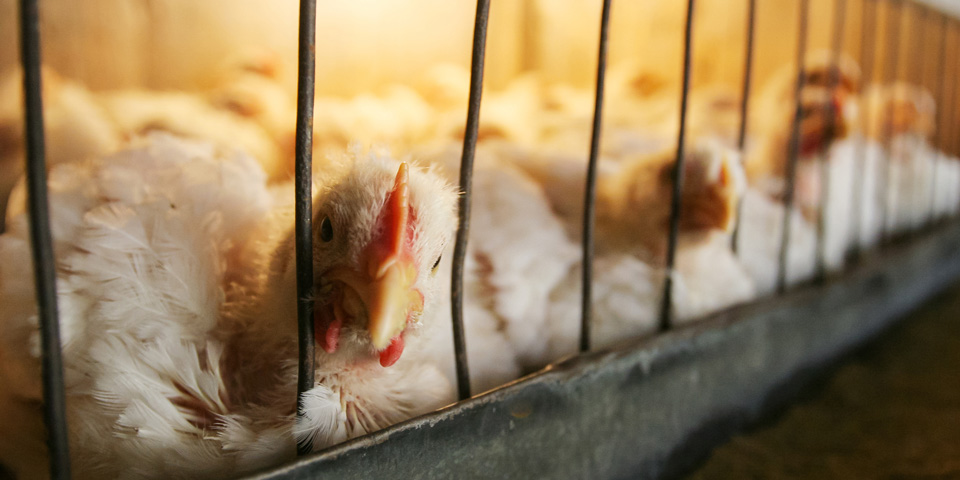
A new GM corn is claimed to solve nutrient deficiency in poultry diets – but a non-GMO solution is already available, says Claire Robinson
An article published in the ISB News Report trumpets the use of GM beta-carotene-enriched corn in poultry nutrition. The researchers fed the GM corn to poultry and found that “Birds reared on the high-carotenoid diet accumulated higher carotenoid levels in breast meat”. This is considered desirable because it makes the chicken skin take on the golden colour associated by some consumers with health benefits, and because the carotenoids, as anti-oxidants, could extend the shelf life of the chicken.
The researchers also found that the beta-carotene-enriched corn diet appeared to benefit poultry health and conferred some resistance against Eimeria parasites, which can cause the disease coccidiosis. Symptoms can include bloody diarrhea.
However, the new article is a prime example of the misleading hype we have come to expect from purported scientific papers on GMOs for food and feed.
The first and most important fact is that the new GM corn is not needed. High beta-carotene corn varieties, naturally bred with the aid of marker assisted selection, are already available. A paper announcing these non-GMO breeding successes was published just two months before the GM corn paper, in the same journal. So the development of the GM corn was a waste of time and money.
Other problems with the GM corn paper
The GM corn paper suffers from many deficiencies, such as:
1. Levels of beta-carotene in the GM corn are not given, so we cannot compare them with the levels found in the non-GM beta-carotene-enriched corn varieties, which are given in the previous paper.
2. Vital information on the poultry feeding experiment is not given, such as number of animals involved, details of diets, health parameters examined, detailed results of health examinations, and mortality figures. This lack of information enables the researchers to make claims based on selective reporting.
3. The paper is strangely schizophrenic – some might say dishonest. It leads with the problem of vitamin A deficiency in humans in developing countries (thereby invoking guilt in well-fed readers and policymakers), while focusing on a way to solve the problem of nutrient deficiency in intensive poultry production!
4. The paper uses GM golden rice as an example of a “cost-effective and sustainable approach” to the “biofortification of staple crops” – ignoring the fact that this GM crop is still tied up in research and development problems after failing its field trials. GM golden rice still hasn’t been proven safe to eat or effective in solving vitamin A deficiency in the target malnourished populations. Similarly, the GM multivitamin corn cited by the authors does not appear to have been approved by regulators or commercialized anywhere in the world.
5. One of the authors of the GM corn paper is GMO proponent Paul Christou. Christou and his co-authors declare that they have no conflicts of interest in their ISB News Report paper. But Christou holds inventor status on GMO technology patents. His failure to declare that fact casts doubt on the whole group of authors’ claims of no conflicts of interest.
Wider questions ignored
As has become the norm with GM “solutions” to supposed problems in farming and food production, wider questions are ignored. A poultry diet based on corn is nutritionally deficient and it is this problem that the GMO corn is claimed to solve. Chickens are omnivores and need a varied diet that includes naturally beta-carotene rich foods like fermented green forage, as well as insects and animal protein. Chickens were traditionally kept in people’s backyards and fed kitchen waste, which would have included vegetables, grains and meat scraps. Such diets lead to healthy birds and the deep yellow egg yolks and golden skin colour prized by the food industry and consumers.
The best that can be said about the latest GM “solution” to yet another problem of factory farming is that it might provide extra beta-carotene in the nutritionally deficient diet of factory farms – but this benefit could equally be achieved with non-GM corn. There is, however, one benefit that could not be provided by non-GM corn: the financial benefit that GM corn brings to the GMO patent holders.










